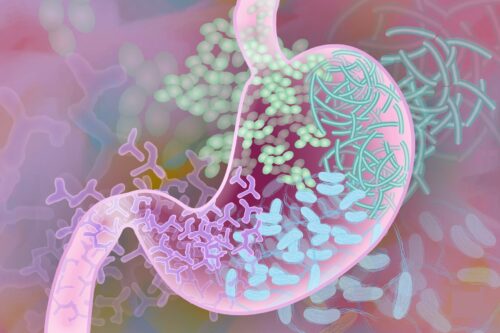Image courtesy of Darryl Leja via Flickr
The gut microbiome, the diverse bacterial community within our digestive system, plays a crucial role in human physiology and has been linked to various health conditions, including Alzheimer’s disease and colorectal cancer. While some of these associations are well-understood, others remain elusive. Beyond its role in fundamental biological processes, the gut microbiome also has broader social implications, influencing aspects of public health, diet, and maybe even behavior.
Research from the Yale Human Nature Lab reveals that social connections not only influence our character but may also shape gut microbiome composition. The study examined individuals across eighteen isolated villages in Honduras, mapping social relationships based on whom participants spent time with and trusted. All the village populations chosen partook in a local diet without antibiotics or other medications. These social networks were categorized into familial and non-familial relationships. To explore potential links between social interactions and microbiome diversity, researchers sequenced the gut microbiome of participants, assessing how their microbial composition varied in relation to their social networks.
This research is the result of nearly a decade of idea-sharing, planning, and brainstorming. The project originated from the Yale Human Nature Lab’s work on obesity and its tendency to spread within social networks. This led to discussions about possible mechanisms of transmission, with the gut microbiome emerging as the leading hypothesis.
Once the research focus was established, extensive logistical planning was required to transport equipment to Honduras, train staff for sample collection and survey administration, and eventually return the samples to the US. The COVID-19 pandemic caused delays, but by the time restrictions eased, the process of data analysis was beginning.
This was when Francesco Beghini, a postdoctoral researcher at Yale, got moving. As the project’s computational biologist, he applied statistical and computational tools to map social networks and analyze their relationship with gut microbiome composition. For Beghini, this phase was both rewarding and challenging—while it provided real data for meaningful insights, it was difficult to stay focused solely on the datasets relevant to the study. “You have all this data combined together, and you could look at different perspectives at the same time, but because of time, you have to focus on just sets of things,” Beghini said.
This study revealed the implications of one’s social circle in shaping the gut microbiome. Individuals who shared social connections had more similar gut microbial compositions compared to those without a “connection.” The highest rate of bacterial strain-sharing was observed among family members and individuals living in the same household, while the lowest was found among those residing in different villages.
Beyond social relationships, the study has broader implications for non-communicable diseases. Beghini believes its findings could extend to conditions such as cardiovascular disease—the leading cause of death in the US—which has been linked to the gut microbiome. Identifying specific bacterial strains associated with certain manifestations of cardiovascular disease could open new avenues for targeted therapies.
While the microbiome remains invisible to us, Beghini offers a simple piece of advice. “Interact with people and make friends—your gut will thank you.”

